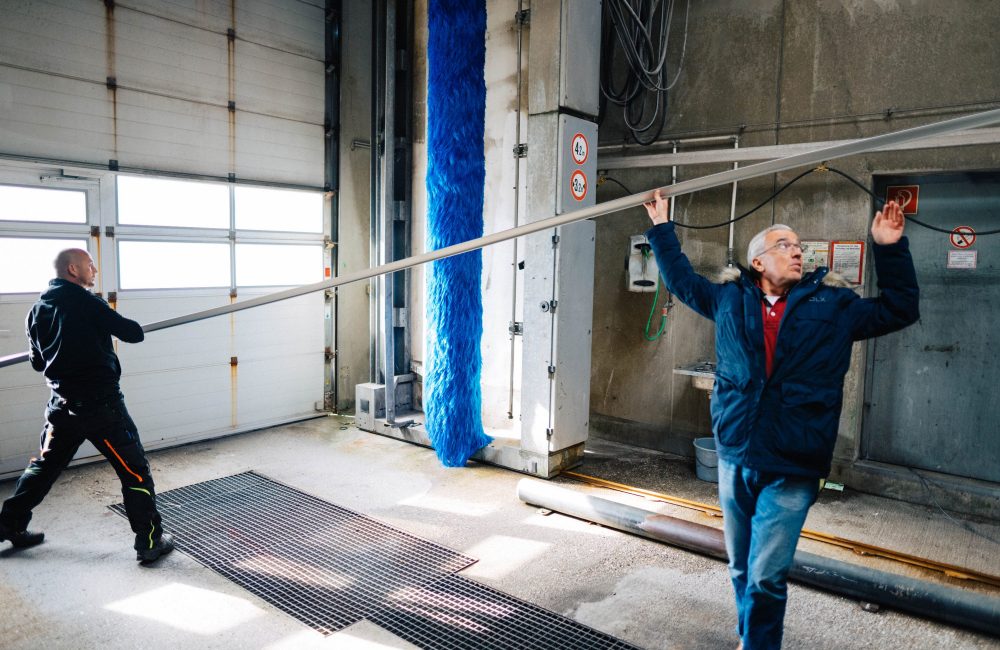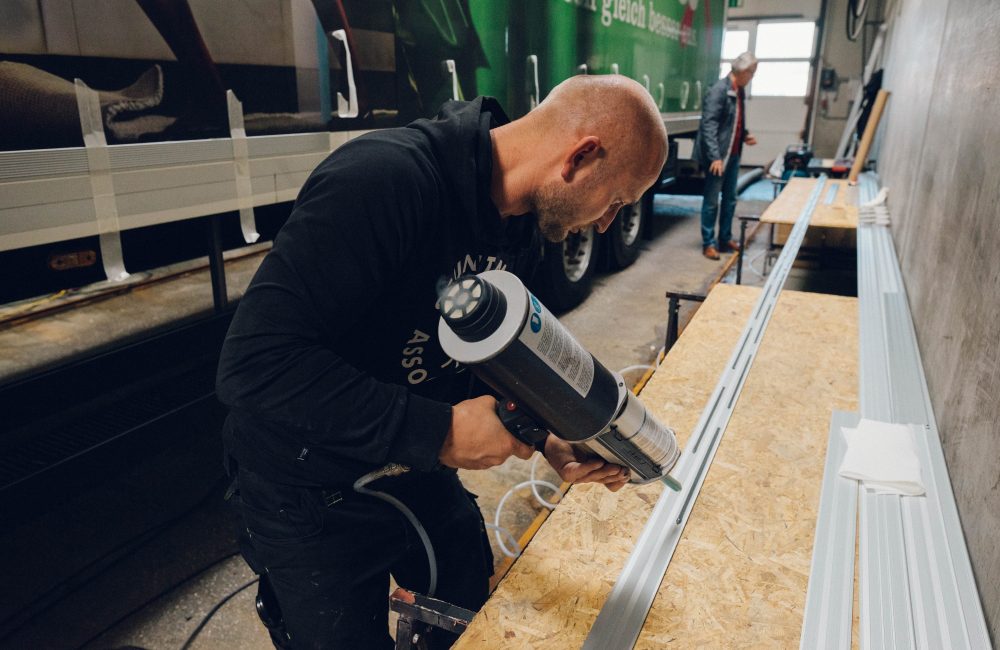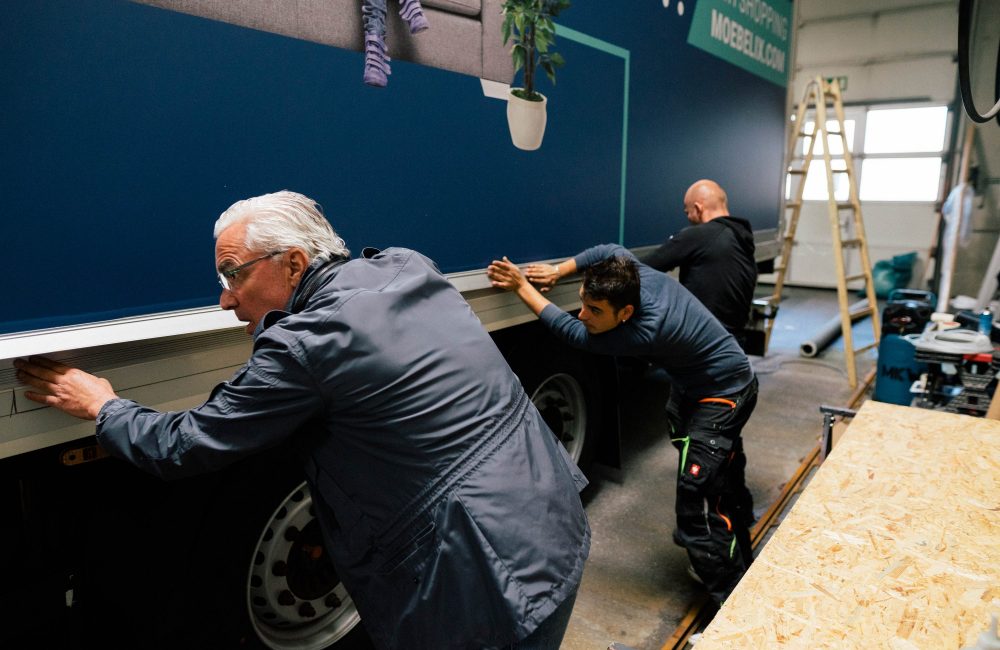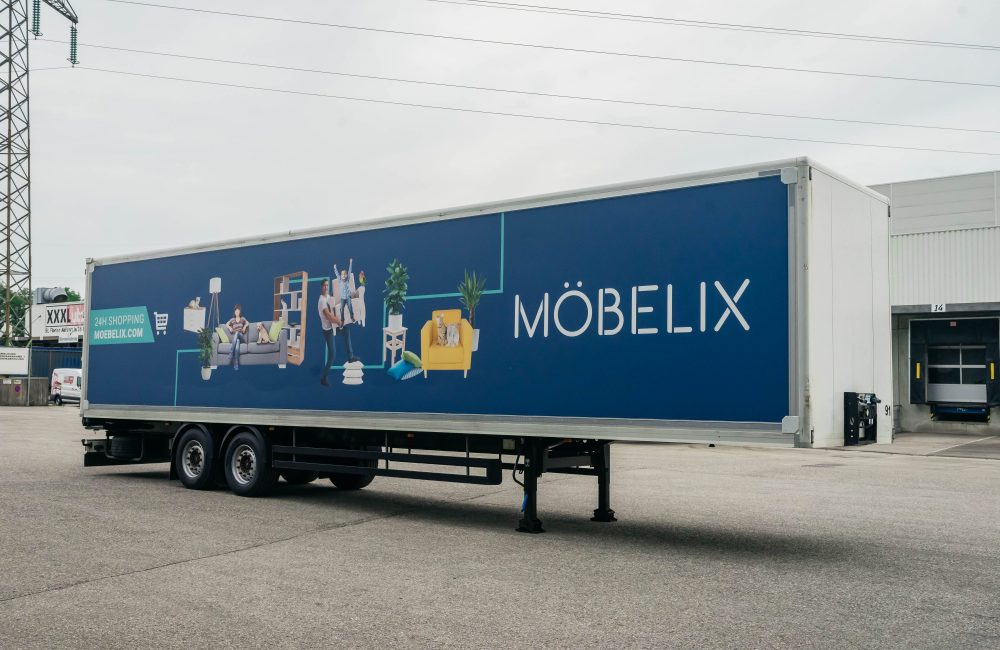Fleet media: How does an advert fit on a truck?
On highways and country roads, occasionally one’s passing by in the middle of town: there’s hardly a day without seeing a truck. Hardly a day without noticing their sales messages, placed big and bold on the trailers. But how does an advert fit on a truck? That’s the question we’re going to answer in today’s blog. With a glimpse behind the scenes that goes beyond what you’ve seen so far.
“A little bit further! … We’re nearly there!” – Wolfgang Nezwal’s voice is determined, his eyes focused. Right down to the millimetre he’s pushing the slat against the trailer. It’s a task that demands a sure instinct. An instinct for the way in which each slat is glued on, precisely tailored. Until the whole truck is clothed into a complex framing system.

Now it’s time to wait a little. The special adhesive needs to dry. Nezwal uses the time to speak about the beginnings of the process: “Originally there was one of these typical foliations on the track. First of all, we needed to get rid of that.” With a hot air blower, the adhesive was released bit by bit, until the foliation could simply be peeled off. And created the room for something new. Time and again. With a flexible system that turns the track into a convertible advertising channel.

But how does this actually work? As soon as the adhesive has dried and the framing system is mounted on the track, Nezwal starts his demonstration. The motive has been chosen, the fitting counterparts to the frame are fastened to the printed tarpaulin. Then it’s drawn into the rills of the system – and tightened around the track. This needs a lot of strength: “All together!” Nezwal’s voice permeates the room. A few minutes later, the motive is securely fixed. With a tension that would be hard to increase any further: if you brush the mounted image with your fingers, it feels like touching a solid wall.

The big advantage over the foliation is obvious: as soon as the framing system is installed, the motive can be changed at a moment’s notice. Within a few minutes. Without having to create the right temperature conditions before, as you’d need to for a foliation. This turns adapting sales messages into a simple task – and it’s similarly simply to carry them through the whole country, on the company’s own vehicles: The trucks are immediately ready again to go back on the road. The whole fleet has become a flexible advertising channel. Flexible – and, at the same time, economic: it’s not necessary to lease any additional ad space. This part is taken over by the trucks themselves. And if a certain motive is to be displayed a second time, the production costs are zero as well: the tarpaulin can be stored and reused at any time.

And where are those motives coming from? After all, they’re much more than simple flyers. They’re largely oversized prints. Who ensures their quality? Perhaps you already know the answer: “It’s us, of course,” Nezwal chuckles. TREVISION isn’t only offering the framing systems. TREVISION is offering the overall package. From planning via mounting through to ongoing servicing – including ongoing renewals. Because just staying where we are, that’s never been our cup of tea.
Timelapse video of the assembly of the system including the subject covering

Mit dem Laden des Videos akzeptieren Sie die Datenschutzerklärung von YouTube.
Mehr erfahren